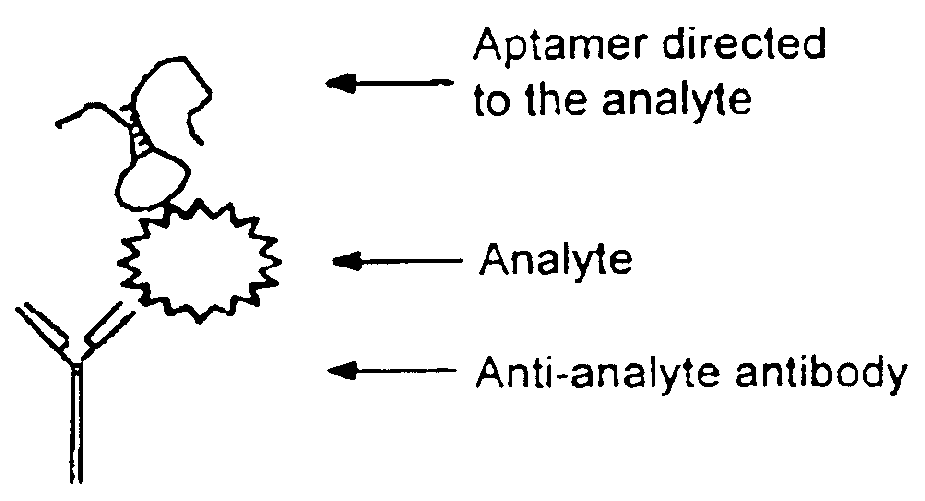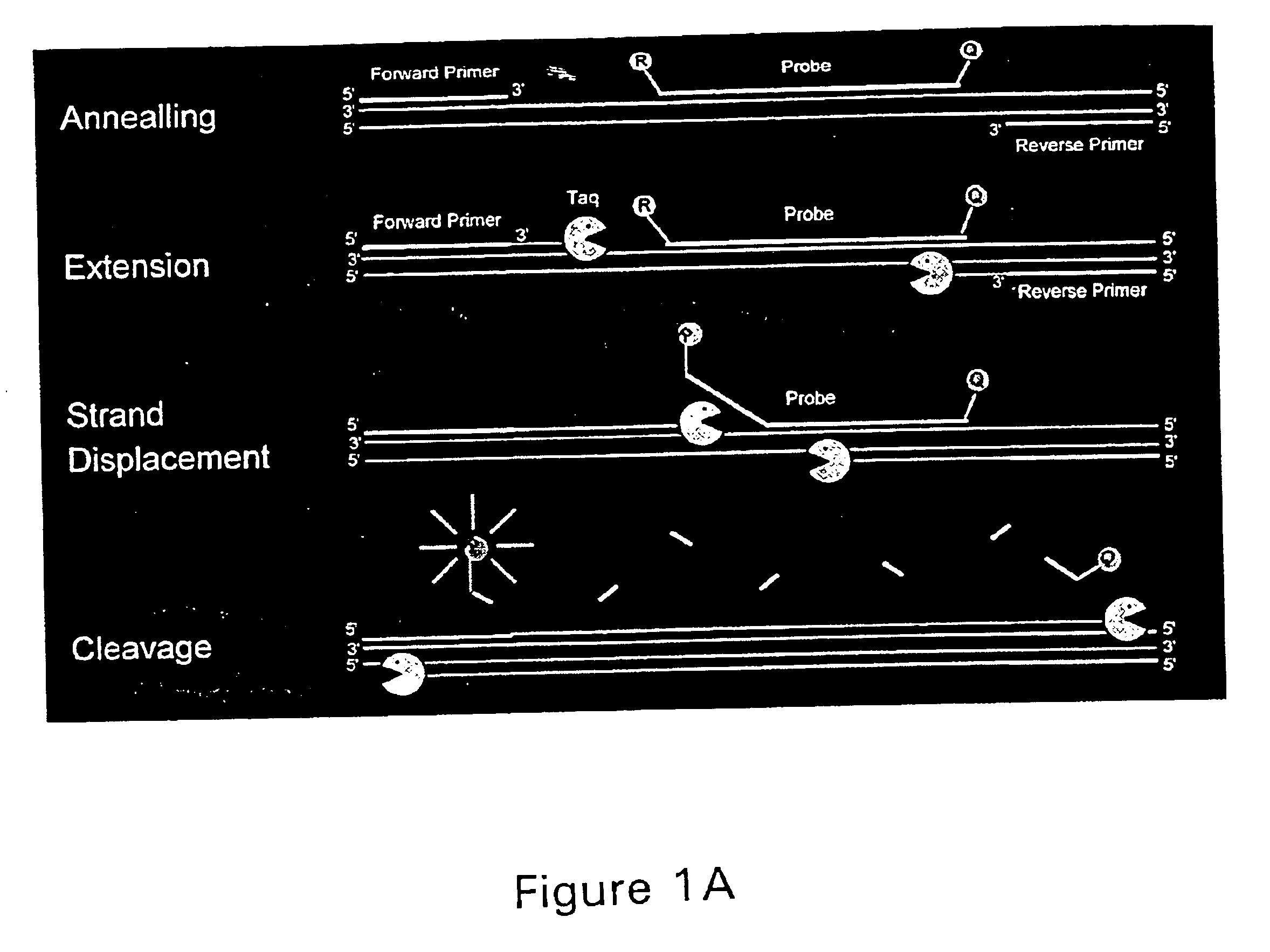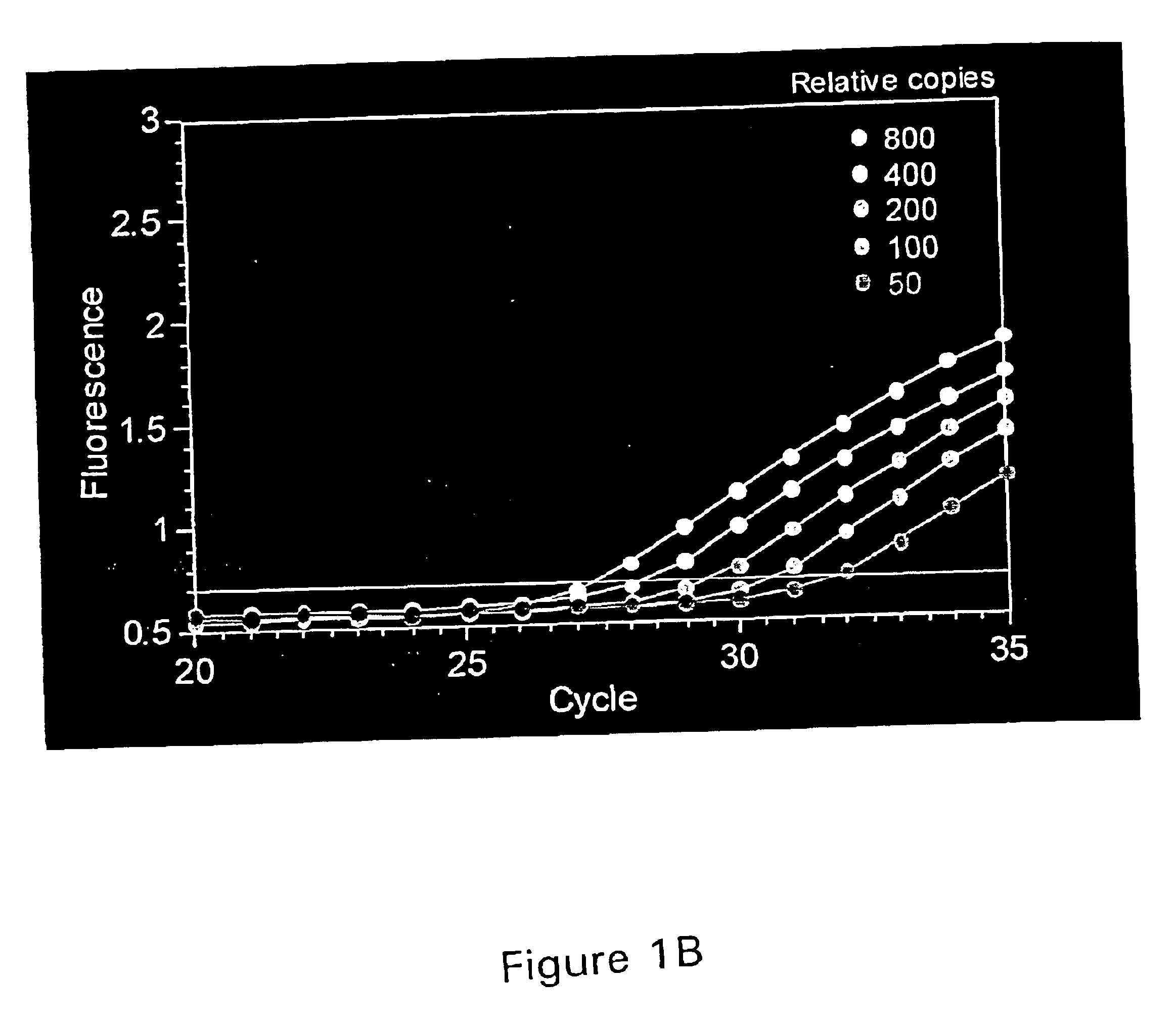PCR assay
a technology of assay and pcr, which is applied in the field of pcr assay, can solve the problems of inability to reliably detect nucleic acids in body fluids, cumbersome assays, and low though-put, so as to improve the dynamic range, improve the sensitivity to conventional methods, and improve the effect of resistance to contamination
- Summary
- Abstract
- Description
- Claims
- Application Information
AI Technical Summary
Benefits of technology
Problems solved by technology
Method used
Image
Examples
example 1
Aptamer Selection Procedure
[0082]VEGF protein was prepared according to known procedures. VEGF aptamer binding buffers was prepared as follow: 1×PBS / 1 mM MgCl2.
[0083]Thirteen millimeter pop-top membrane holders (Corning Costar Corporation) were wetted with ˜50 μl of 1× binding buffer. HAWP 0.45 μM filter, HA filter type (Millipore, Bedford, Mass.), was added to the wetted surface and the top portion of the membrane holder was assembled. RNA was added to binding buffer (at various concentration, depending on the round of selection) at a total volume of 90 μl. The RNA was heat equilibrated at 70° C. for 3 minutes (to denature the RNA) and the RNA was folded by snap cooling the solution on ice. Pre-selection occurred by adding the 90 μl of folded RNA to the filter in the assembled holder. Using a 5 mL syringe, pressure was created to slowly force the solution through the filter and into a capture eppendorf tube.
[0084]A 10× concentration of a protein solution (w...
example 2
DNA Labeled Antibody Detector Molecule
Primers, Probe, and DNA Label
[0135]The 71 base DNA label, 5′CCAACCTCCTGTCCACCAACTCTTTCGTTGGATGTATCTGCGGCGTTTATGTTGGTTCTCCTGGACTGGAA3′ (SEQ ID NO: 29), was derived from DNA sequence of the woodchuck hepatitis B virus (Genbank locus OHVHEPBA). The DNA label was synthesized by using standard β-cyanoethyl phosphoamidite chemistry on a DNA synthesizer (Applied Biosystems). To introduce a sulfhydryl to the DNA, the 5′-thiol-modifier C6(S-trityl-6-mercaptohexyl)-(2-cyanoethyl)-(N,N-diisopropyl)-phosphoramidite (Glen Research, Sterling, Va.) was attached during synthesis. The upper primer, 5′CCAACCTCCTGTCCACCAAC 3′(SEQ ID NO: 30), the lower primer, 5′ TTCCAGTCCAGGAGAAACCAACA 3′(SEQ ID NO: 31), and the probe, 5′ CTTTTCGTTGGATGTATCTGCGGCGTTT 3′(SEQ ID NO: 32), sequences were designed by the computer program Primer Express 1.0 (PE Applied Biosystems).
[0136]The primers were purchased from Research Genetics (Huntsville, Ala.) and the probe was purchased from...
PUM
| Property | Measurement | Unit |
|---|---|---|
| Concentration | aaaaa | aaaaa |
| Concentration | aaaaa | aaaaa |
| Concentration | aaaaa | aaaaa |
Abstract
Description
Claims
Application Information
 Login to View More
Login to View More - R&D
- Intellectual Property
- Life Sciences
- Materials
- Tech Scout
- Unparalleled Data Quality
- Higher Quality Content
- 60% Fewer Hallucinations
Browse by: Latest US Patents, China's latest patents, Technical Efficacy Thesaurus, Application Domain, Technology Topic, Popular Technical Reports.
© 2025 PatSnap. All rights reserved.Legal|Privacy policy|Modern Slavery Act Transparency Statement|Sitemap|About US| Contact US: help@patsnap.com



